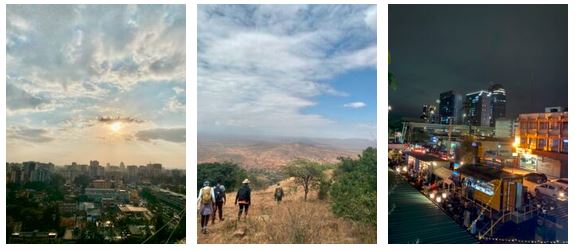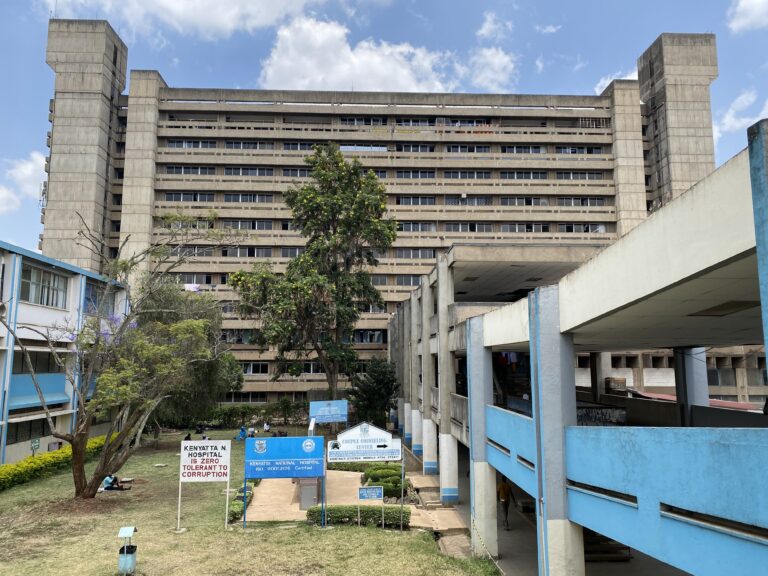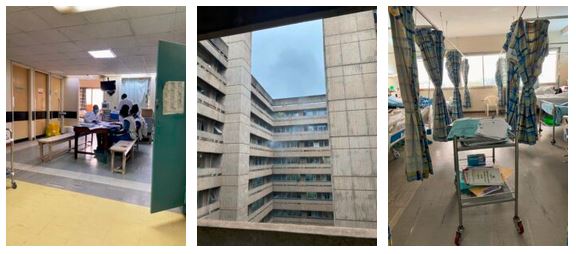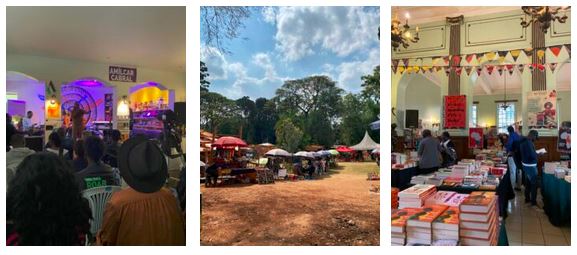My Elective at Kenyatta National Hospital (KNH)
I find myself at the end of my three-month elective in Nairobi, and it has been a remarkable experience! I got to know the Kenyan people as kind, welcoming, and with a cracking sense of humor. It is easy, to get into conversations with strangers, about food or life or politics. Nairobi is big, vibrant, full of people and traffic. I had to give myself some time to find my way around and figure out what the city has to offer: many cultural events, awesome restaurants and cafes, good places to grab a drink and dance. When the city’s buzz and traffic become too much, nature and hiking trails are not far away, either at the Karrura forest in the north of Nairobi or a bit outside the city.

Since the beginning of July, I`ve been rotating through the wards of the hospital`s Internal Medicine department. KNH is huge, the sprawling size and bustling activity felt overwhelming at first. It is situated within a colossal concrete block which may benefit from some renovations. In the wards, rooms are shared by about ten patients, and they are often packed to the brim, which makes privacy and confidentiality hard to find.

I began my elective in the respiratory medicine department, where many patients required treatment for tuberculosis, often coupled with HIV. The classics found in respiratory wards in Germany, like COPD and lung carcinoma, were also common. Afterwards, rotation led me to the endocrinology ward, where the majority of patients presented with diabetic ketoacidosis. A typical day in the hospital starts with the ward round during which patients are assessed and examined. Twice a week, we gather for a major ward round where the patient`s cases are discussed more comprehensively with the consultants (the senior doctors). After the rounds, documentation, blood work, radiology requests and smaller procedures have to be completed – so quite similar to the work in Germany. One of the biggest differences to Germany is probably the fact that the doctors here don`t work with computers but do everything on paper, which makes tasks like documenting or labeling blood samples highly time-consuming.

Cardiology was never my favorite discipline among internal medicine, but the team in the ward was great, so work there was fun! However, the patients were extremely ill, many young patients grappling with advanced and decompensated heart failure due to rheumatic or congenital heart diseases. Overall, patients at KNH are treated for serious conditions. Health facilities in Kenya are categorized into different levels, with level one comprising small rural health centers and level six representing the largest and most specialized facilities. KNH falls into the latter category, catering to patients with advanced and intricate medical conditions. Besides, KNH is a public hospital. Most people who can afford it seek treatment in one of Nairobi’s private hospitals. This means that the patients who come to KNH often have limited financial resources and can’t afford to pay into the National Health Insurance Fund (NHIF – the public health insurance). Some diagnostic and therapeutic procedures can’t be conducted until financial cover is provided, often resulting in extended hospital stays while bills are settled.
A prevailing issue that continually looms over discussions about the healthcare system in Kenya is corruption. KNH is underfunded, and one of the reasons is that the available money fails to reach those for whom it is intended. It disappears somewhere along the way from the public budget to the wards of KNH, in the pockets of a few individuals. Common utilities, like gloves are rare some days. Basic medications, such as antibiotics or anticoagulants, can be sporadically out of stock. It is frustrating to hear that funds intended for the healthcare of people just get siphoned away. It is a systemic problem that stands in the way of providing care to those who depend on facilities like KNH. And people like the staff and the patients of KNH pay the costs.
I wrote about some things that don`t work out well at KNH. But I feel like anything else would not live up to my experiences here and, above all to the incredible people that I work with at KNH. The people do struggle. Most residents have to work second jobs to earn a living because they are not paid for their residency positions. It makes me angry when I arrive at the hospital in the morning and see the doctor I’m working with just finishing his night shift. On such days he is beyond tired, but he still manages to give good care to the patients and takes his time to be empathetic and engage with patient`s families. On such days he does not sink into grumpiness or self-pity but is utterly enjoyable to be around and keeps up a spirit that is remarkable. For me, the elective at KNH is challenging but also very enriching. The health professionals are both very kind and knowledgeable. Teaching is highly valued, and during lunch breaks, people insist on paying for my meal and talk openly about their lives and their perspectives.
There are many preconceptions about African countries by people like us in Germany. Media mostly talks about hunger, poverty, corruption, or war. It is true, African nations face different problems, than “developed” countries (however, many problems are rooted in more fundamental issues like the long-term consequences of colonialism or unequable global trading practices). But life is much more here in Kenya for me. It is meeting a variety of different characters, just the rich tapestry of characters I encounter back in Germany. It is an exciting and diverse cultural scene. It is people who invite me to their birthday parties even though knowing me for a couple of weeks. It is people who are curious about my life without harboring envy towards me to live in a “first-world country” (as they phrase it themselves). It is holding up a mirror to me and the unearned privileges I was born with, without accusing me of anything. It is people full of ideas and drive to build a good future for themselves and their communities.

